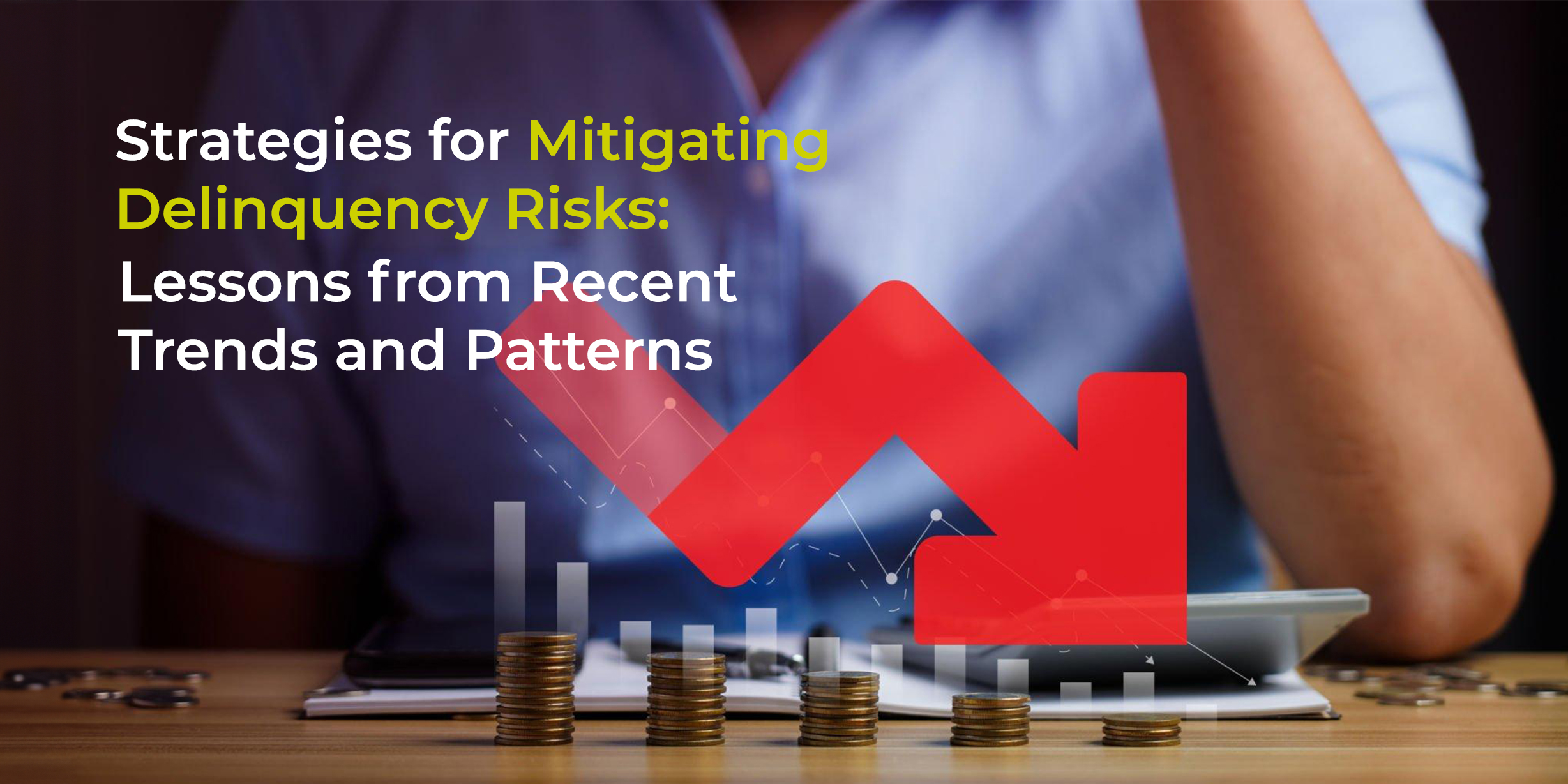Trends in delinquent loans have been volatile lately, reaching a historic low towards the beginning of 2023 before rising again in October. Mortgage companies need to focus on proactive delinquency prevention to reduce their exposure to these risks. Given today’s unpredictable economic climate, this has to be a top priority in 2024.
Recent Trends and Patterns in Delinquent Loans
The rate of delinquent loans reached an all-time high during the 2008 financial crisis, reaching nearly 10%. Since then, various economic measures and consumer protection laws have worked hard to keep delinquency rates under a manageable threshold. In 2019, mortgage delinquencies in the US came down to less than 4%.
However, the COVID-19 pandemic provided an unexpected shock to the economy and delinquencies jumped from 4.36% to 8.2% in less than a year. During the quarters of the pandemic, several relief measures were put in place that acted as a buffer against delinquency risks, and the number of delinquent loans has steadily decreased since then.
In Q2 of 2023, delinquency rates fell to an all-time low of 3.37%. This was good news for mortgage companies, as it meant fewer foreclosures, lower servicing costs, and manageable operational risks. However, the tide is once again turning, and the rate of commercial and multi-family mortgage delinquent loans has increased slightly in 2023, Q2.
This is due to several factors, such as aging commercial properties, a lack of transparency into the exact current property value, and volatile interest rates.
Delinquent loans can adversely influence a mortgage business’s cash flow, profitability, as well as market reputation. You will likely need to spend resources on collections and legal proceedings to recover the dues. If a delinquent loan goes into a default state, it may eventually end up in foreclosure, which is a time-consuming and costly process.
Prevention is almost always better than cure, which is why lenders need to prioritize proactive delinquency prevention.
Read More: Declining Delinquency Rate: What Does it Mean for Mortgage Providers?
5 Strategies for Proactive Delinquency Prevention
To prevent delinquent loans from happening in the first place and then figuring out the complexities of default servicing, lenders need to follow these steps:
1. Refine credit analysis and underwriting processes
The most effective way to approach proactive delinquency prevention is to weave risk mitigation into the underwriting process. Conduct a thorough credit analysis of the borrower, factoring in raw/big data such as social media history. These new and emerging data sources can play an important role in predictive risk analysis, in addition to traditional parameters like credit history, debt-to-income ratio, and trends in collateral valuation.
2. Provide low-failure payment options
While payment failure is not a common cause of delinquent loans, it can lead to undue hassles for the borrower and problems in cash flow for the lender. Credit cards, for example, have a 5-15% failure rate as a result of card expiration, cancellation, or theft. In rare cases, several months can pass before the borrower is able to rectify the situation. In contrast, standing orders and direct bank transfers have a greater chance of uninterrupted payments.
3. Elevate your borrower communication strategy
Smarter borrower communication can go a long way in achieving proactive delinquency prevention. Your objective should be to provide borrowers with clear action points and the next steps if they are unable to make a payment, instead of only following up repeatedly. Make use of digital channels to reach borrowers where they are most likely to engage with their mortgage providers. Leverage social media, chat, and emails in addition to traditional phone calls and texts.
4. Forge third-party alliances that protect both the lender and the borrower
Certain third-party financial products, such as life and disability coverage, can be a boon for borrowers living from paycheck to paycheck. In fact, 62% of Americans live paycheck to paycheck in 2023, with many households having tapped their savings and cash reserves in the pandemic years. Inflation can make it more difficult to replenish these reserves, making it crucial to plan ahead for proactive delinquency prevention.
In case the borrower suffers an accident that causes inability to work, life and disability coverage for the loan duration will kick in to prevent a delinquent loan. Extended car warranties are another product you can offer, as it can prevent vehicle repairs that can turn into a heavy financial burden for your borrowers.
5. Offer financial education to your borrowers
Finally, provide borrowers with counseling and advice about their decision to buy, not just the process of buying. Customers often end up with delinquent loans due to the lack of financial education and a clear understanding of their personal financial health. Financial education prepares home-buyers to shoulder more responsibility for their finances and make intelligent, timely decisions.
Read More: Tech Investment Strategies for Mortgage Lenders: Making Informed Decisions and Amplifying Returns
How Nexval Can Help?
Given recent trends and patterns in delinquent loans, the upcoming quarters could continue to see a rise in interest rates, accompanied by steady inflation. Lenders can expect frequent delinquencies, even foreclosures, which put pressure on their bottom lines, along with a costly origination process. Strong digital infrastructure can help you mitigate some of this risk by making underwriting more accurate, streamlining borrower communication, and supporting new product portfolios.
At Nexval, we help US lenders bolster their digital systems with AI and automation so that the end-to-end mortgage value chain becomes more efficient. Through digitally enabled proactive delinquency prevention measures, we assist in reducing risks while continually growing your bottom line.
Speak with our subject matter experts to know more.


